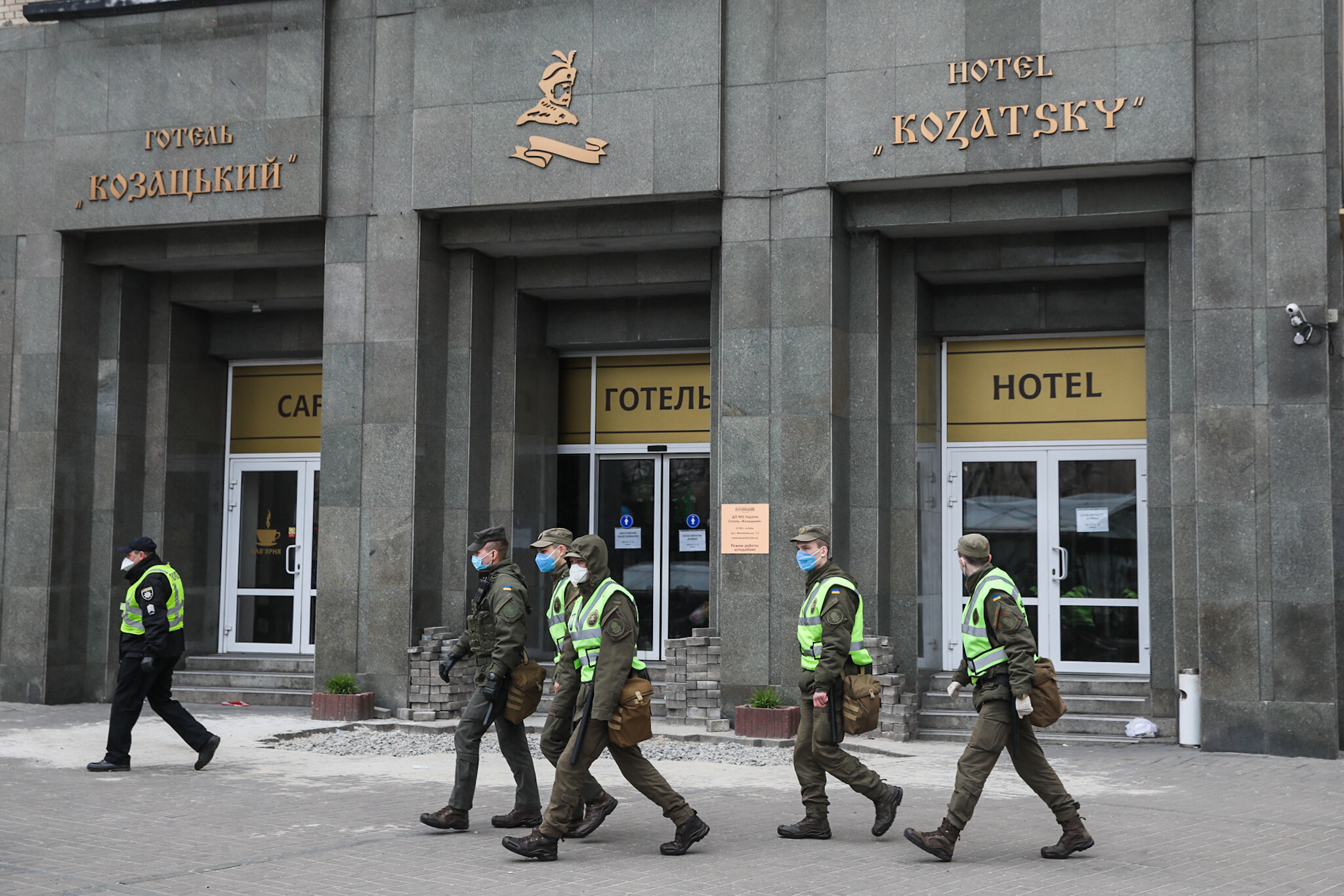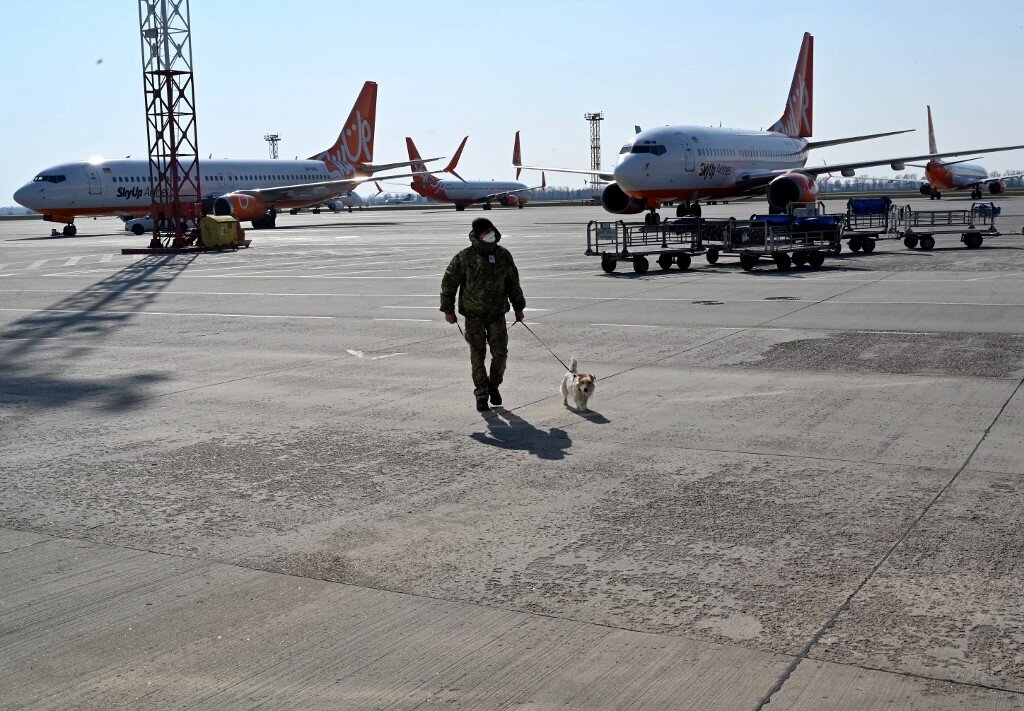The novel coronavirus outbreak of 2020 — the most rampant and deadly epidemic of this century — will likely be remembered for how quickly it spread around the world, and the lasting changes it made to how people live, work and travel.
The COVID‑19 respiratory disease that the novel virus spreads has inflicted a devastating collective injury on all of humanity, having infected at least 5.7 million people, killing more than 352,000 of its victims.
It simultaneously brought the global economy to its knees and pushed millions into bankruptcy, unemployment, and poverty. Governments have needed to deploy over $9 trillion worldwide in emergency fiscal support, according to the International Monetary Fund.
But the disease also prompted a lockdown that has forced millions of people to abandon normal ways of working, socializing, and traveling. Airports were forced to close as airlines slashed their flight schedules. Skies were almost emptied of commercial aircraft as carriers grounded their fleets and started burning through cash to stay afloat.
Some railway stations and subways were left deserted too, making travel and getting to work impossible for many. Hotels, hostels, and resorts were also closed down and some that did not close became flashpoints for the disease.
About three-quarters of the world’s 16,000 passenger aircraft have been grounded since March. Multiple major airlines have said they’re only prepared to reopen about 40–50% of their usual routes after lockdown.
Millions working in the travel and leisure sector face unemployment, and industry experts, such as Ukraine International Airlines (UIA) CEO Evgeniy Dykhne, say that airlines worldwide face $314 billion in losses this year, as well as no return to 2019 levels of travel before 2023 at the earliest. Dykhne announced on May 28 that the airline would dismiss 900 of its employees. In a statement, he also said the carrier is “taking all possible measures to reduce costs and generate income,” including reducing its fleet of planes.
Normality suspended
Tourism and leisure may be the slowest part of life to revert to normal. Some experts say it may be forever changed, or at least severely altered until there is a cure or vaccine for COVID‑19.
“It has been a disaster like a nuclear explosion for us,” said Yevgeniy Ikhelzon, a tour guide and travel journalist who runs an adventure tourism company sending groups to 45 different countries.
“We totally stopped all activities from March 15… all trips from March to now have been postponed. We hope to restart the business when flights are allowed,” the founder and owner of My Name is Travel added.
Andrey Burenok, founder and CEO of the TripMyDream travel agency and a popular travel blogger on YouTube, said his company experienced a 40% drop in demand in the second half of February, and 60% in March. Through April demand for their services had almost entirely evaporated.
“When they stop buying airline tickets and booking hotels, we stop making money,” said Burenok. “Over the past couple of months, we have several hundred thousand dollars of losses.”
Quarantine measures are now being gradually lifted and some flights may soon be available. Railway stations and some land borders with the European Union are also starting to reopen. But it all comes amid fears over insufficient levels of testing in Ukraine, the possibility of a possible second wave of infections, and slow progress in identifying effective COVID‑19 treatments or a vaccine.
“The travel business will not be the same — that’s for sure,” said Burenok, adding that his agency is in the process of complete transformation that will focus more on domestic tourism in Ukraine for the foreseeable future.
“We are now reorienting ourselves on travels in Ukraine, preparing more than 500 brochures on where to go, when, where to refuel, where to stop, where to eat and what to see in a particular city. We help our customers get the most out of their vacation in the current environment.”
Those tourists will need somewhere to stay in Ukraine, and with lockdown restrictions being eased through the first few weeks of June, many hotels will be reopening after a period of closure or partial closure.
Jesper Henriksen, former country manager for Radisson hotels in Ukraine, now an independent adviser in the travel business, says that COVID‑19 has been a catastrophe for hotel owners and it’s unclear when things can return to normal.

Police and National Guard soldiers pass by the Kozatsky hotel in central Kyiv on March 30, where Ukrainians evacuated from Indonesia will have to undergo a mandatory observation for signs of the novel coronavirus. Some of the evacuees refused to do it and payed a fine. Others simply escaped. (Volodymyr Petrov)
Empty hotels
“The travel and hospitality sector has been the hardest hit by the COVID‑19 pandemic,” said Henriksen. “Besides a few exceptions, all hotels in all major Ukrainian cities closed down for the duration of the pandemic lock-down and most hotels remain closed at least until the reopening of airports.”
Hotels in Kyiv are especially dependent on international travelers and lost their clientele with the closure of airports and the borders, Henriksen said, adding that some hotels have lost all of their revenue during the lockdown. There has also been a wave of layoffs in the hospitality sector because of COVID‑19, he said.
“For the hotels with enough financial stability, many tried to keep at least some core staff still on reduced payroll,” the hotelier and travel expert explained.
“However, large numbers could not and the lack of government financial aid packages will see some hotels not reopening, and a permanent loss of employment… Many well-trained hospitality employees will need to look for alternative jobs.”
A significant driver of revenue for many of the larger hotels is conferences and events, experts say: “It will take even longer before companies will dare hold large gatherings for clients or employees,” noted Henriksen.
According to Kyiv Mayor Vitali Klitschko, tourism in the Ukrainian capital in April and May was down by more than 90% compared to last year. Tour operators, agencies, hotels, and restaurants lost $1 billion during lockdown, the mayor said on May 27, as he eased a number of restrictions to aid the travel and tourism sector by allowing hotels and shopping centers to open.
“The full reopening of airports and borders is needed to recapture clients for business hotels,” said Henriksen. “There is no significant recovery yet… The 4–5 star hotels will need much longer time to get back to pre-COVID‑19 level.”
Airlines grounded
Airports are gearing up to welcome back some airlines after more than two months of most flights being suspended.
But there is still a great deal of uncertainty over which routes will return and exactly when flights can resume, but the reopening of Ukrainian skies may start in the first three weeks of June, with Lviv airport in western Ukraine announcing its plans for a June 15 reopening.
The airlines are certainly keen to start selling tickets. Wizz Air, Lufthansa, Czech Airlines, RyanAir, and Swiss were among the first non-Ukrainian airlines to announce their intention to start flying some Ukraine routes in June, while Ukraine and Georgia have started discussions on forming a travel link between the two countries.
But the gradual lifting of lockdown and travel restrictions is still dependent on the ever-changing state of the epidemic, which has claimed at least 669 lives in Ukraine, and seen more than 22,300 become infected, as of May 28.
Airlines are likely looking to recoup some of their 2020 losses, and UIA CEO Evgeniy Dykhne says carriers may look to make savings by reducing the number of flights and reducing the number of aircraft they own or are leasing. Older aircraft may be scrapped, sold, or sent for long-term storage.
The nation’s flagship carrier UIA, part-owned by the controversial Ukrainian oligarch and billionaire Ihor Kolomoisky, has appealed for government support and says it will lose $60 million by the time the nationwide quarantine has ended, Dykhne has said.
Volodymyr Omelyan, minister of infrastructure from 2016–2019, told the Kyiv Post he is disappointed that the Ukrainian government has provided little in the way of economic support to airlines and airports. He said the national carrier UIA was not in great shape before the COVID‑19 crisis, having had a plane shot down over Iran only in January, and will struggle to recover.
“The German government just supported Lufthansa with a 9 billion euro package,” Omelyan said. “This would be a dream for the whole of Ukraine to get this amount of support for all of our industries… we’ve got nothing, it’s like peanuts,” he said.
The government hasn’t bailed out struggling Ukrainian airlines but has reduced its share of profits to be taken from the state-owned parts of airports — from 90% to 30%, but Omelyan said that hardly makes a difference at the moment “because the profit is zero during a crisis anyway.”

A customs officer walks with his service dog on the tarmac of Boryspil International airport, some 29km from Ukrainian capital of Kyiv on April 2, 2020. (AFP)
Travel in age of COVID‑19
Omelyan says that firstly the Ukrainian government needs to decide and make an announcement on when to officially reopen Ukraine’s skies to commercial air traffic.
Reopening airports alone does not guarantee the availability of regular and reliable flights, and doesn’t signal a return to normal.
Then other countries, especially in the European Union, will be evaluating the health risks of allowing commercial flights between their country and Ukraine, while the airlines themselves will have to decide if they want to take the commercial risk of Ukraine as a destination, and how many planes they can realistically fill with paying passengers in both directions.
At the same time travelers will be determining whether or not it’s safe and desirable to fly, Omelyan said. The airlines and airports will be implementing plenty of measures to keep transport as safe and free of infection as they can, but the passenger experience will suffer.
Air travel will be different until 2023 at least, many experts think.
Dykhne of UIA says that airline passengers may see the following: no hot meal service, no hand luggage allowances, online check-in only, temperature screening at security and on flights, the closure of airport lounges, and the closure of duty-free shops.
“Governments… as well as airlines, are introducing different methods of protection against COVID‑19. Given these limitations, it is unlikely that people will be traveling normally anytime soon,” said Andrey Burenok. “And whether they want to travel under the proposed conditions is another question,” he added. “When they will require vaccinations, tests, observation, social distancing, masks, and so on.”
Other experts say that travel could become more expensive. Airlines may be forced to raise ticket prices to offset this year’s losses, and that the cost of extra measures (such as the removal of some seats or leaving seats vacant) may be passed down to passengers.
Some airports and major airlines in countries such as Qatar, South Korea and Singapore have implemented a variety of such changes and more already.
Measures to ensure safety and cleanliness may become common: electrostatically charged disinfectants sprayed in cabins to thoroughly clean the inside of planes, more advanced air filtration systems, and even sniffer dogs trained on the socks of COVID‑19 patients that can detect traces of the disease on aircraft passengers.
“The travel business, I think, will begin to recover a little in six months,” said Burenok, who has pivoted his company more towards domestic tourism for now. “It will return to the state before the pandemic, at best, in three years, and at the same time it will be completely different. The way we travel will change very much,” he said.
